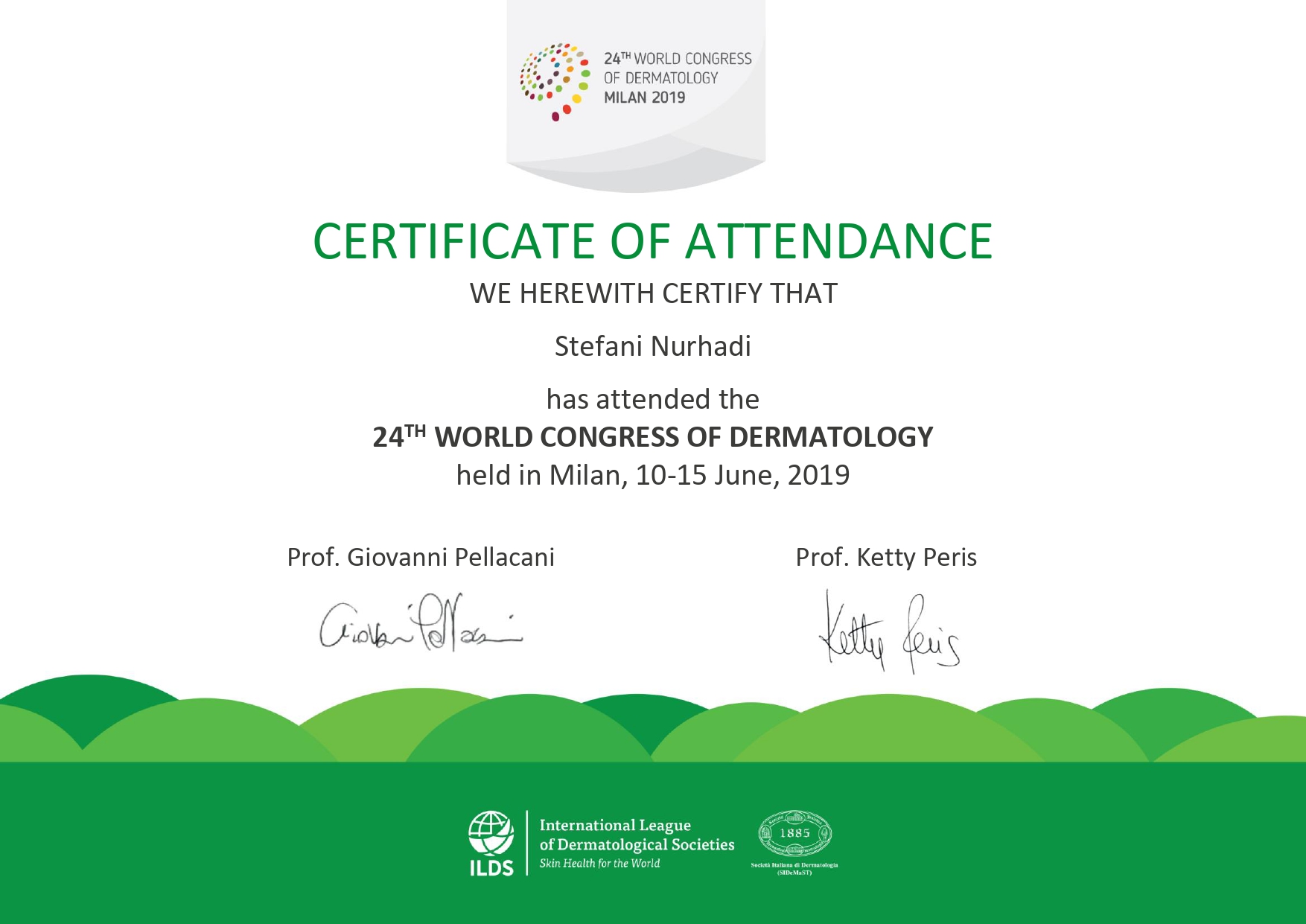CLUES TO PERIPHERAL ARTERIAL DISEASE: ONYCHOMYCOSIS AND MORE
Date
2019-06-10Author
Nurhadi, Stefani
Oeiria, David Sudarto
Wirya, Stephen Akihiro
Metadata
Show full item recordAbstract
Background: Onychomycosis is defined as fungal infection of the nail due to dermatophytes or non-dermatophytes. It can present as discoloration, dystrophy and subungual hyperkeratosis. However, despite its diseased appearance, onychomycosis is often regarded as a cosmetic problem.
Peripheral Arterial Disease (PAD) is a condition caused by occlusion of the peripheral arteries. This condition is often asymptomatic, but may present as cold intolerance, discoloration, decreased or absent of pulses and ulcers of the toes. This condition, if not properly treated, can lead to permanent disability, cardiovascular and cerebrovascular complications.
Optimal oxygenation and metabolic exchange are essential to maintain tissue health and integrity. The disruption of arterial perfusion may facilitate the development of fungal and bacterial infections. Since PAD is often asymptomatic, many patients may unknowingly harbour PAD for extended period of time without treatment. Dermatologists should be made aware of the correlation of these two seemingly unassociated conditions in order to make the correct diagnosis and apply appropriate treatment for the underlying condition as well as the infection.
Observation: An 38-year-old male complained of dystrophic toenails and non-healing wound on the toes a year prior to coming to our center. He had been treated by several physicians using various oral and topical medications without any improvement. Dermatology examination on toes revealed dystrophic and loss of nails with multiple ulcers covered by yellow-brown crusts. Fungal nail culture revealed Trychophyton mentagrophytes and Candida parapsilosis. In addition, Stenotrophomonas maltophilia was also isolated from wound culture. This multi-infection hinted us to the eventually proven PAD using arteriography. Patient was then given a treament regimen of oral vasodilator and anticoagulant in addition to oral antifungal and topical antibiotics.
Key message: The presence of severe dystrophic toenails in chronic onychomycosis and toes' skin infection should lead to suspicion of PAD, enabling appropriate treatment.

